
Saint Sulpice and the “Rose-Line”
by Richard Benishai | Articles
Abrégé : Le roman de Dan Brown, le Code de Da Vinci, est devenu un best seller partout dans le monde. En France seulement, 2.3 millions de copies ont été vendues ! Ce roman extrêmement fascinant a été basé sur un certain nombre de faits réels, dont certains sont largement connus, et certains nouveaux. Une partie du livre se concentre sur une église parisienne, Saint-Sulpice, dans le 6ème arrondissement (voir les schémas 1, 2 et 3). Dans son livre, Dan Brown parle d une ” Ligne Rose ” dans l’église qui est censée cacher la clef du Graa
Abstract: Dan Brown’s novel, The Da Vinci Code, was a huge hit all over the world. In France alone, 2.3 million copies were sold! This extremely fascinating novel was based on a number of actual facts, some of which are widely known, some which were new. Part of the book centers in a Parisian church, Saint-Sulpice, in the St. Germain quarter of the city (see Figure 1, Figure 2 and Figure 3) . In the book, Dan Brown mentions a “Rose-Line” in the church which was supposed to hide the Key to the Holy Grail. This line indeed exists in the church, although the story around it, in the novel, is a fabrication of Dan Brown imagination.
I was drawn to Saint-Sulpice, a quiet church in the Saint Germain quarters of Paris, by its description in the novel. During my short visit, I was fortunate to meet Father Roumanet, the local priest and discuss with him the facets of the novel dealing with the church. He assured me that very few of the facts mentioned in the book, were indeed true. What is described hereafter is the real story of Saint- Sulpice.
The Energetic Side of the Church
Due to my limited time, the energy mapping of the church was preliminary in nature (see Figure 4). However, the basic design found in other churches, was used in this building. For instance, there is a fault and underground stream (wet crack), running in the center of the church. This combination of geological elements was used in almost all churches to amplify and also distribute the energy of the church to surrounding locations. The depth of the water at the entrance is 13 meters. The level drop down to 43 meters, at the very rear, in the Chapel of the Virgin; in this manner water always flows in the correct direction. This is the only water way under the church, as opposed to other churches I have visited, that have water networks also running under the columns.
The electromagnetic networks, Curry and Hartmann are positioned exactly under the columns.
Energy-wise, I found this church to behave like all others, I have visited: the energy increases as one progresses toward the rear of the building. The energy was measured with a pendulum and a graph, using my body’s sensitivity. The results are shown in Figure 5.
About the Church
The present church is the second building, erected over the ancient church. The first church was originally constructed during the 13th century. Additions were made to the church over the centuries, up to 1631. The new building was started in 1646 and was completed in 1789. For a representation of the construction progress, over the years, see Figure 6.. This church, so calm today, has known the turmoil of history. It has sheltered kings and queens, Robespierre and Napoleon Bonaparte. To this place, have come men and women renowned for their sanctity. This church was a vibrant center of spirituality during the 16th and 17th centuries.
The Gnomon
In his novel, Dan Brown refers to the line as the “Rose-Line”, as being the meridian line for Paris, mentions that the church was built on the site of an ancient pagan cult and places the location as the mystical axis for France. None of this is true.
From a note, posted in the church: “Contrary to fanciful allegations in a recent best-selling novel, this [the line in the floor] is not a vestige of a pagan temple. No such temple ever existed in this place. It was never called a Rose-Line. It does not coincide with the meridian traced through the middle of the Paris Observatory which serves as a reference for maps where longitudes are measured in degrees East or West of Paris. Please also note that the letters P and S in the small round windows at both ends of the transept refer to Peter and Sulpice, the patron saints of the church, and not an imaginary Priory of Sion.”
This indicator line or gnomon, is a simple measuring tool, established in 1727, at the request of Mr Languet de Gercy, the priest of Saint Sulpice. This priest needed to know exactly the equinox of Mars and thus Easter Sunday. That is, the Sunday following the full moon after the spring equinox. What was asked to be done:
- To raise a column of white marble,10.72 m. high (shown in Figure 7).
- To insert a meridian line made of brass, running from north to south (see Figure 8)
- To set-up a system of lenses at the south-end window, to shine a ray of light on the brass line.
This system was intended to establish a number of other important astronomical parameters:
- The rotation axis of the earth in regards to its orbit around the sun
- Observe if the moon was not causing a change in the earth’s axis
- To verify if the air temperature affected the height of the sun for the winter solstice
- The day of the year when the earth is closest to the sun
- Find out the difference between the average time, as shown on clocks and the real time indicated by the passage of the sun on the line in the floor.
Basic Principles (Figure 9)
The sun rays pass through the lenses located, high in the southern window. The rays concentrate on the floor of the church and form a circle of light which moves from West to East, as the sun travels. When the circle reaches the brass line, it is exactly 12 noon locally, or about 12:50 officially, since the official time is one hour ahead of the sun and Paris is East of the Greenwich meridian.
According to the season, the sun is more or less high over the horizon. Consequently, the light spot moves along the meridian and is located at different places, relative to the season and the period in the season. Thus, the light spot is over the marble plate (Figure 10) – in the southern wing of the church- during the summer solstice, up to the column of white marble (Figure 11) during the winter solstice. During the spring and autumn solstices, the sun shines over a metal plate, located near the entrance gate of the hostel.
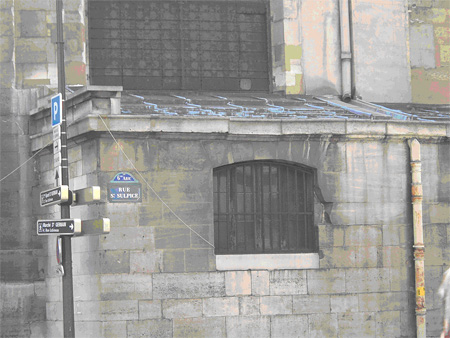
Figure 1: Saint Sulpice Street with Church Corner
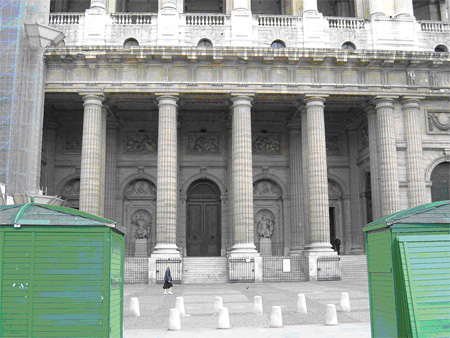
Figure 2: Front View of Saint Sulpice Church

Figure 3: Front View of Church

Figure 4: Energetic Mapping of the Church
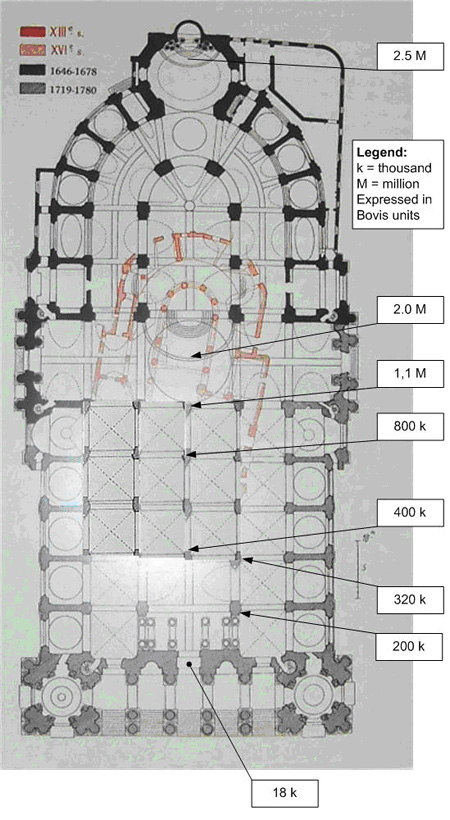
Figure 5: Energy Layout
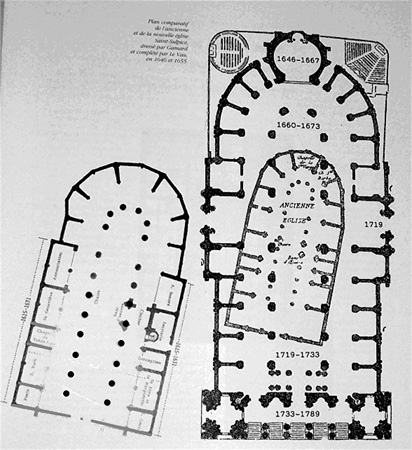
Figure 6: Ancient Church
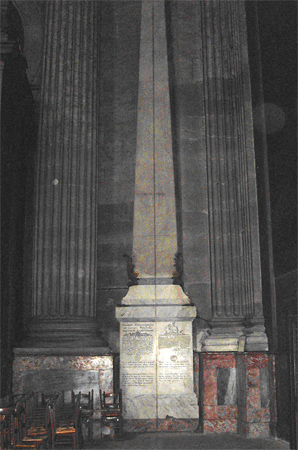
Figure 7: The Obelisk with the Brass Line
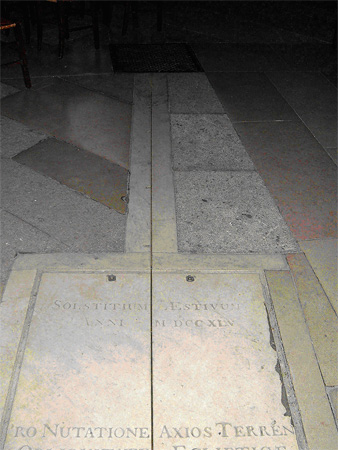
Figure 8: The Starting Point for the Brass Line
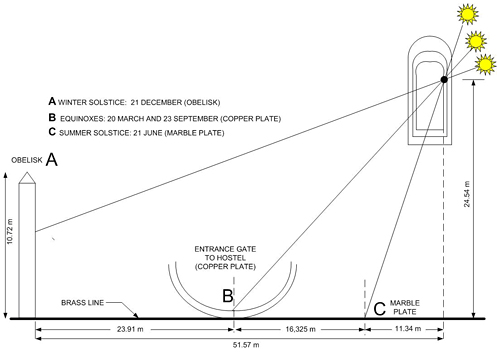
Figure 9: Lens System and References

Figure 10: Marble Plate
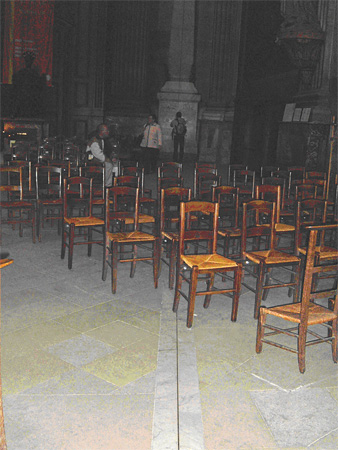
Figure 11: Brass Line Running to Obelisk




